1979 Chrysler Cordoba: Soft Corinthian Leather!

Who could forget the Chrysler Cordoba? In autumn of 1974, Chrysler introduced its all-new personal luxury coupe to fight the good fight against GM’s successful midsize Colonnade coupes: the Chevrolet Monte Carlo, Oldsmobile Cutlass Supreme, Pontiac Grand Prix, and Buick Regal.
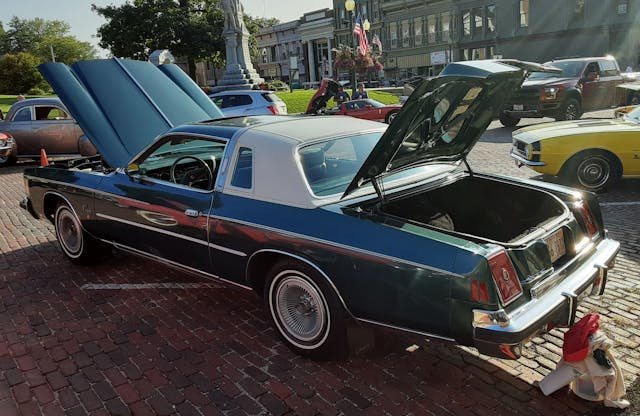
Its advertising campaign was not only a stroke of genius as the final dregs of the muscle car era gave way to Broughamville; it was highly memorable, and frequently parodied on late-night TV. Seemingly overnight, Chryslers went from a big-car-only company to a firm that cranked out midsize personal luxury coupes at a rapid clip. The Cordoba was the right car at the right time.
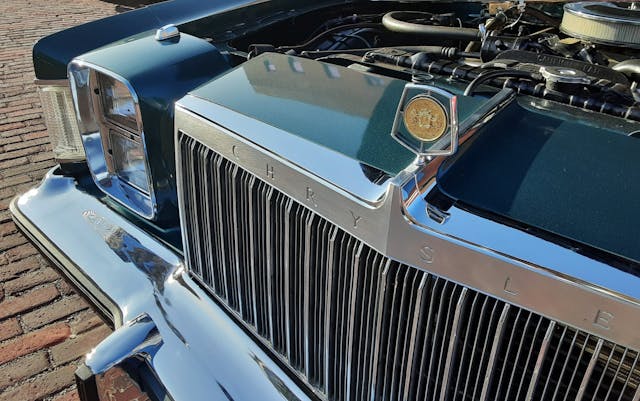
Although these first-generation 1975–79 Cordobas seem pretty good-sized today, at the time they were touted in advertising as “the small Chrysler.” In the mid ’70s, compared to the Nimitz-class New Yorker Broughams and Town & Country station wagons with which they shared showrooms, they certainly were!
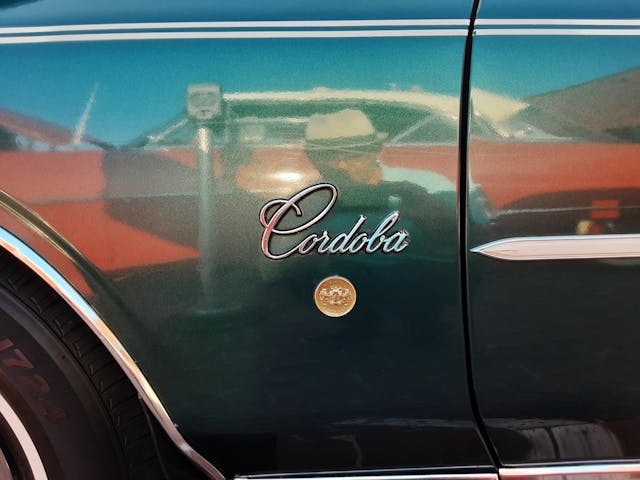
The Cordoba shared almost everything with its also-new-for-1975 Dodge Charger SE sibling, but the Dodge was nearly eclipsed by Cordoba Fever. You can thank the marketing mavens in Highland Park for that. At the time, the Chrysler nameplate still had an upper-crust connotation with buyers. Though the Cordoba was essentially identical to the Charger SE—except for the more formal grille, doubloon-style emblems, stand-up hood ornament, and optional Corinthian leather seating—the Chrysler was far more popular with new-car buyers.
(NB: Chrysler described it as “soft Corinthian leather,” but the parodies usually called it “rich Corinthian leather.”)
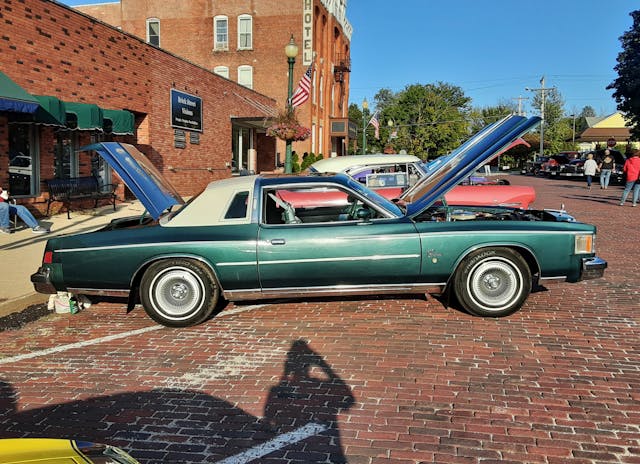
The Cordoba was based on the evergreen B-body Plymouth Fury and Dodge Coronet chassis. It distinguished itself, however, with unique sheetmetal, a 114.9-inch wheelbase, and the longest doors in the industry (58.5 inches!). It also introduced several neoclassic features, the most conspicuous being the deeply tunneled headlamps and parking lamps.
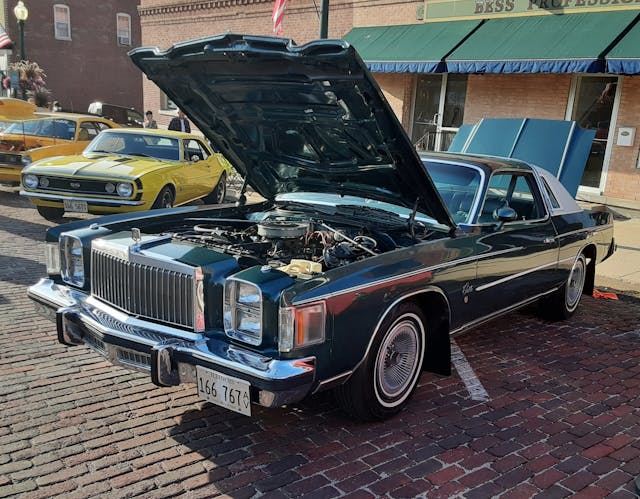
A 150-hp, 318-cubic-inch V-8 with a two-barrel carb was standard on ’75 Cordobas and paired with a TorqueFlite automatic transmission. A 400-cu-in V-8 was available for an extra $73.
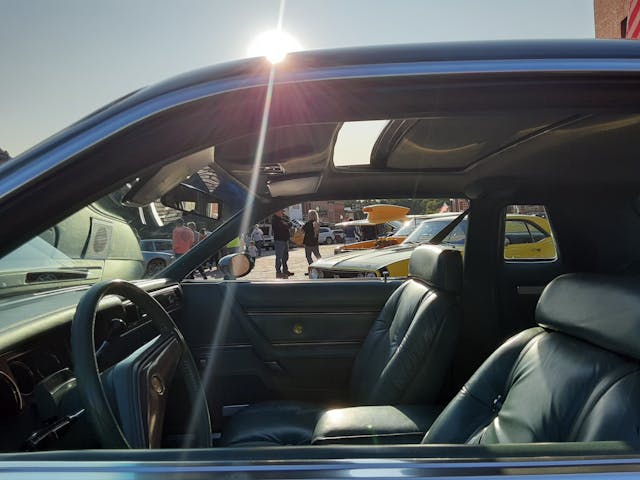
As a Chrysler product, the Cordoba naturally had a torsion-bar front suspension, with the more-common rear asymmetrical leaf springs, power front disc/rear drum brakes, and a front anti-sway bar. 150,105 were built for 1975, a success by any standard. 1976 saw a slight dip to 120,462 units, but sales rebounded to 183,146 for the 1977 model year. That was the high-water mark for Cordoba production, by the way—and the final year for the large, neoclassic dual headlamps and round parking lamps.
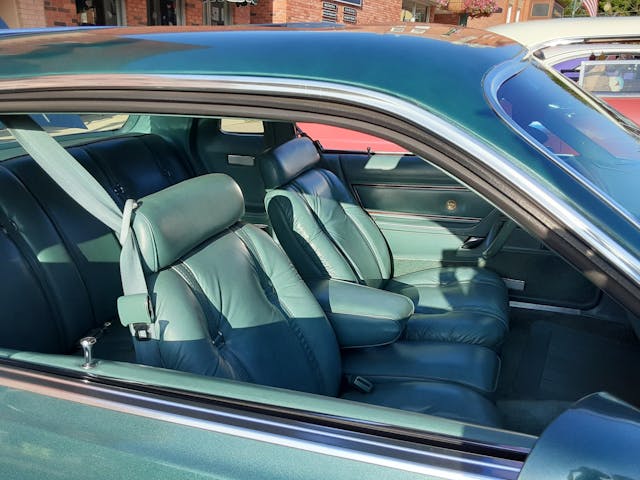
For 1978, Cordobas received a mild facelift, the most noticeable change being the vertically stacked, quad rectangular headlamps. The rear taillamps were also revised and made slightly larger. From the front, the resemblance to the 1976–77 Monte Carlo was hard to miss. Sales dipped to 124,825, a respectable volume but a substantial slide from 1977’s 183K.
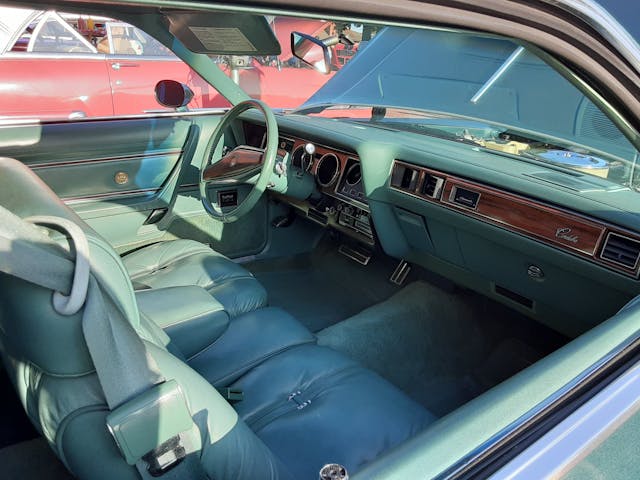
Of course, in 1978 Chrysler was sinking into one of its periodic crises. Quality control was suspect, and the infamous “Sales Bank” (in which Chrysler produced more cars than demand warranted, then stored them all over the Detroit area for months until they sold) was in full swing. The Cordoba still looked good and personal luxury cars were still in demand, but the lightly facelifted Cordoba was perhaps not as exciting as the totally redesigned Monte Carlo, Cutlass Supreme, GP and Regal that appeared that same year.
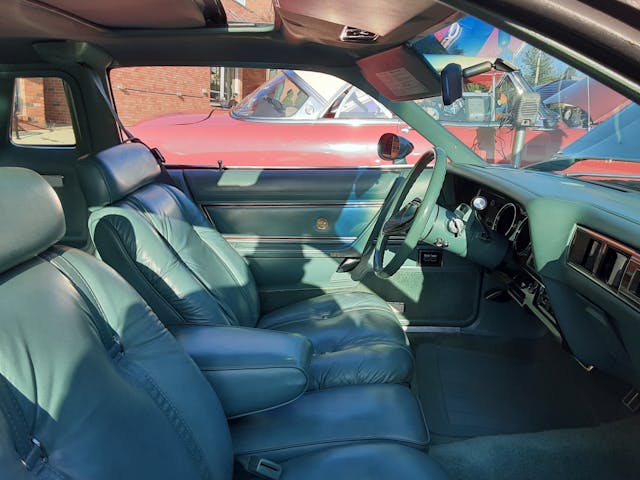
For 1979, the model year of today’s featured car, the original Cordoba made its last appearance in showrooms. The primary distinguishing feature was a new grille with vertical bars. The coupe had a base price of $6337, though a new model—the 300, with cues from the famous “Letter Series” Chrysler 300 coupes of the 1950s and 1960s—started at $8034. Between the two versions, 88,015 were produced—a nosedive when compared to 1978, and a trend that would sadly continue: After 1978, Cordoba sales never again topped 100,000.
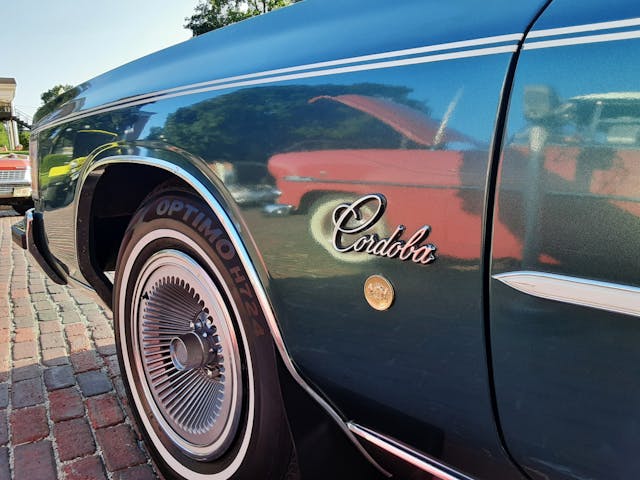
So, what did you get if you bought a Cordoba that year? Standard features for 1979 included a 318-cubic-inch V-8 with a two-barrel carburetor, TorqueFlite automatic transmission, and the aforementioned torsion-bar suspension. Other standard features included power front disc/rear drum brakes, front and rear bumper guards, opera windows, a cloth split-back front bench seat with a folding center armrest, power steering, and color-keyed long-pile carpeting with carpeted lower door panels.
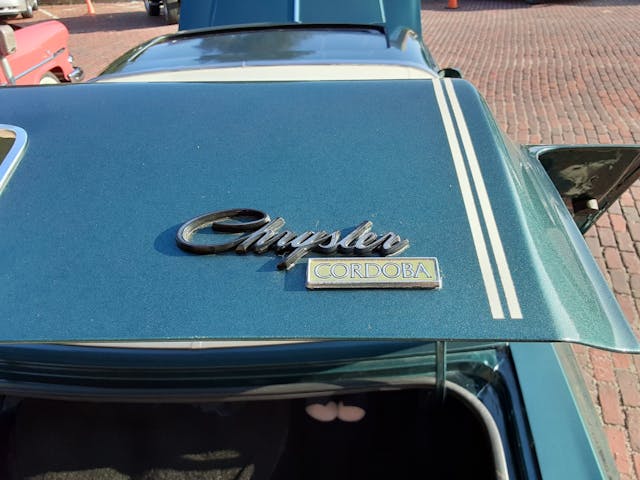
Remember, this was an upper-crust American personal luxury car. So the option list was long. Just to start out, you could get a 360-cu-in V-8 with two-barrel carb or a heavy-duty 360 with a four-barrel and dual exhaust. Other niceties included a power steel sunroof, Corinthian leather (of course!), bucket seats with center console, a T-bar roof with removable glass panels, 60/40 split front bench seat, AM/FM stereo with 40-channel CB, manual or semi-automatic air conditioning, power antenna, wire wheel covers, and two tone paint. That’s only a partial list, too.
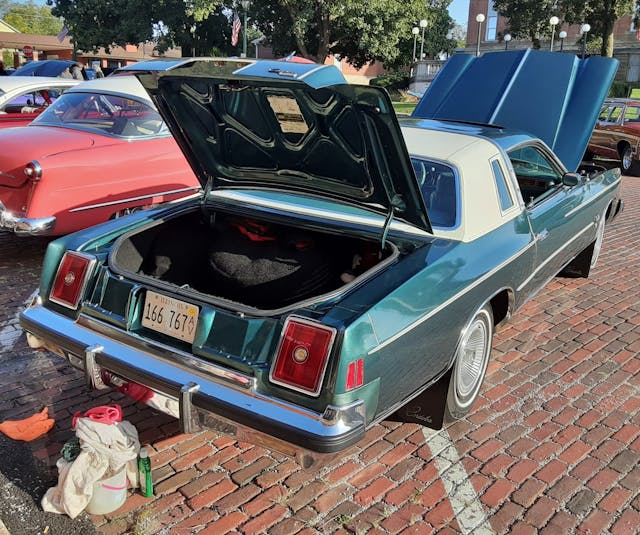
Today’s gorgeous example was spotted by your author at the final cruise to downtown Mt. Carroll, Illinois, back in September of 2020. It was a gorgeous day, and since it was the final event of the year, there were plenty of cars in attendance. My favorite was this Cordoba, resplendent in Teal Frost Metallic, with a white landau top and a spectacular dark green Corinthian leather interior. I was smitten.
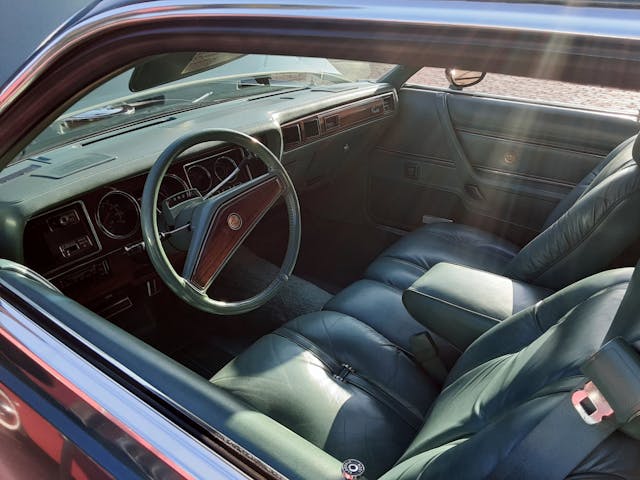
It was not only in terrific condition, it was highly loaded, with the aforementioned leather seating, power steel sunroof, accessory wheels, color-keyed sport mirrors, digital Chronometer clock, leather-wrapped steering wheel, power windows, power locks, and what appeared to be the AM/FM stereo with 8-track player. I loved the color combination most of all, and took way too many photos of the car while attending the show. I actually kept circling back, taking another picture, then another, then another.
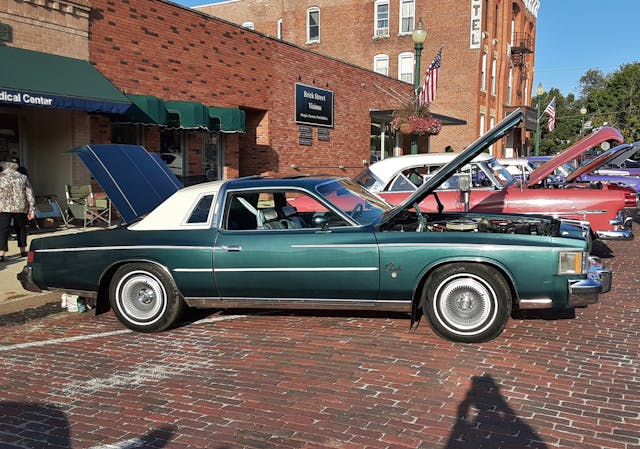
Back to the model history, however. A redesigned Cordoba appeared for 1980 and, though it was nice enough, didn’t quite have the presence of the original, at least in my opinion. Buyers appeared, but in lower numbers than in the past: 31,238 base Cordobas and 22,233 Crown, LS, and 300-trim level versions sold.
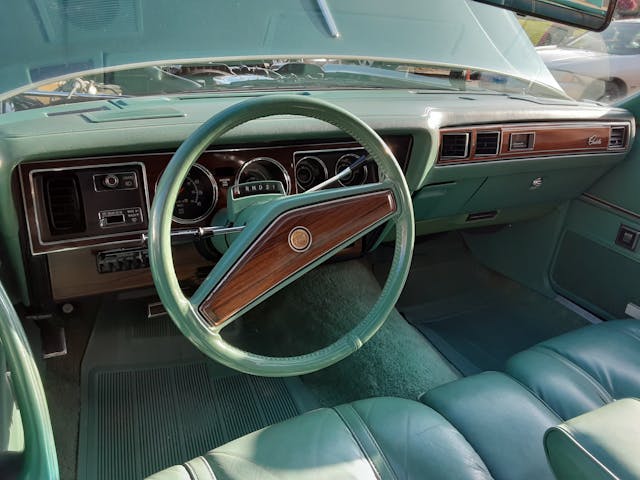
It only got worse, unfortunately, with 12,978 Cordobas and 7315 Cordoba LSs built for 1981. Less than 20K were built in recession-year ’82, and in the model’s final year on the market (1983), a mere 13,471 came off the lines. Over at Chrysler, the K-car and all its derivatives were flying off the lots, and after 1983 the Cordoba was axed, along with its corporate sibling, the Dodge Mirada. The future lay in front-wheel drive and minivans.
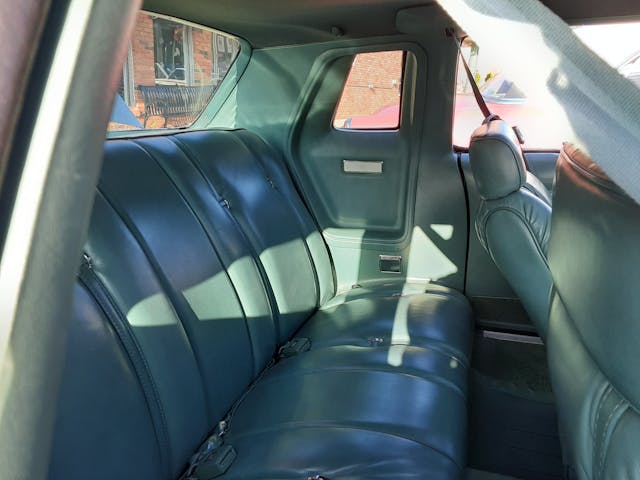
But the Cordoba will live on in our memories, thanks to Ricardo Montalbán and the Cordoba ad campaign of the 1970s. And lovers of all that is Brougham will always seek out, ahem, fine examples—like this one.
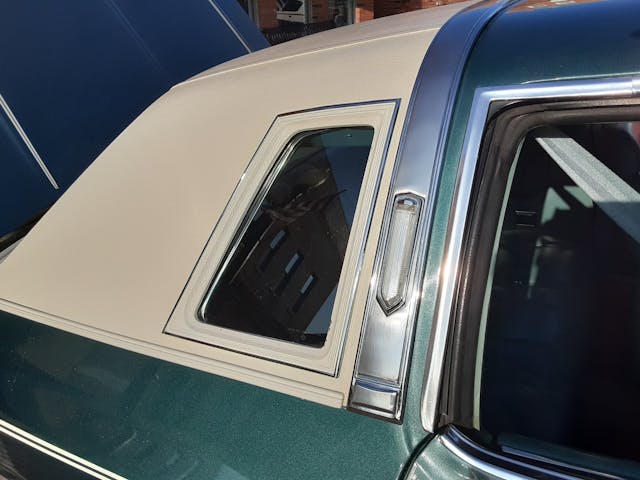


“NB: Chrysler described it as “soft Corinthian leather,” but the parodies usually called it “rich Corinthian leather.””
It was not a parodie. In the 1980 commercial for the Chrysler Cordoba Cordoba Corinthian (!) Edition he describes the leather (?) as “rich corinthian leather”.
My Dad had one of these, EXACTLY the same color. Rode like a dream. I would love a chance to be able to own one